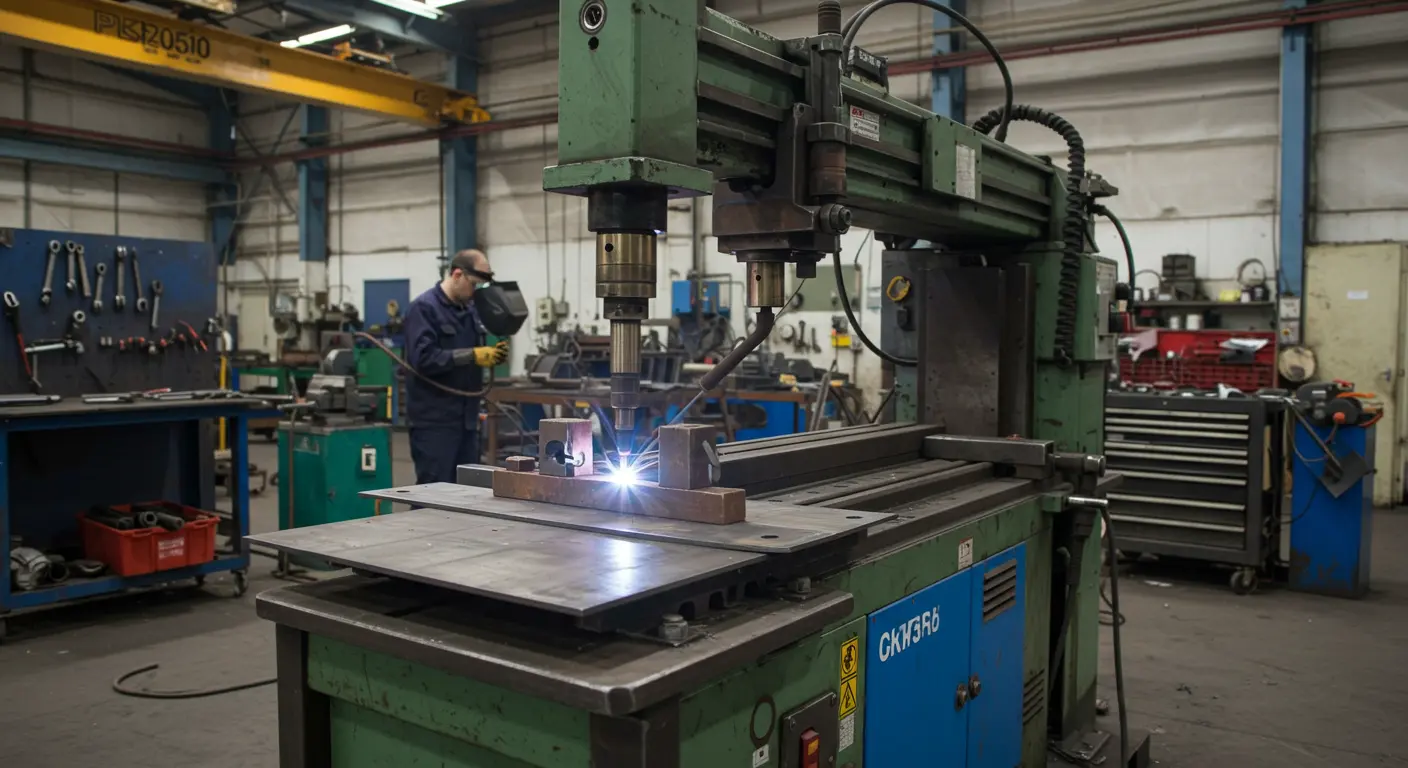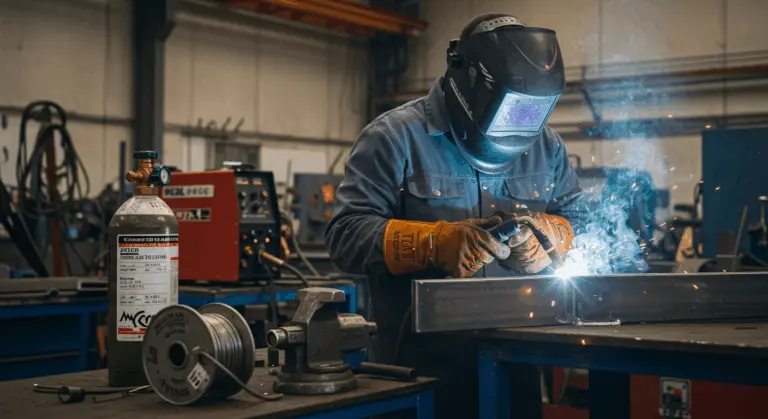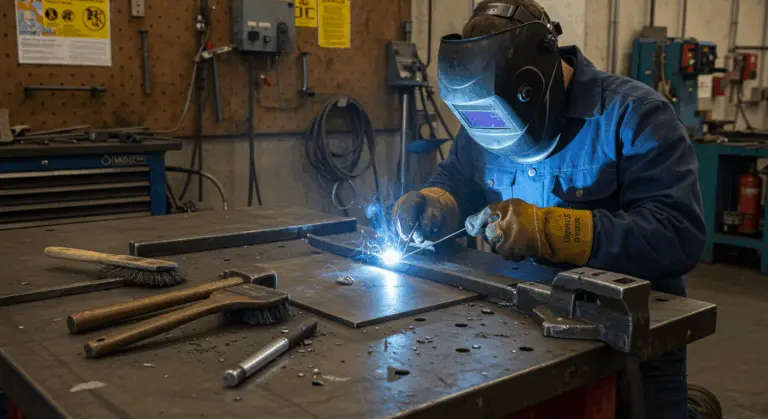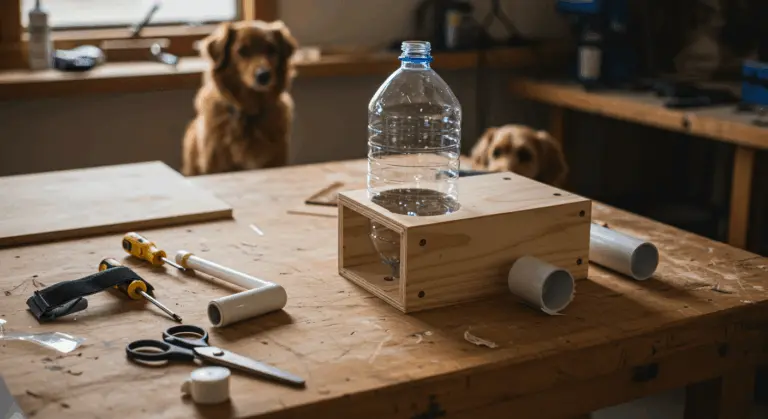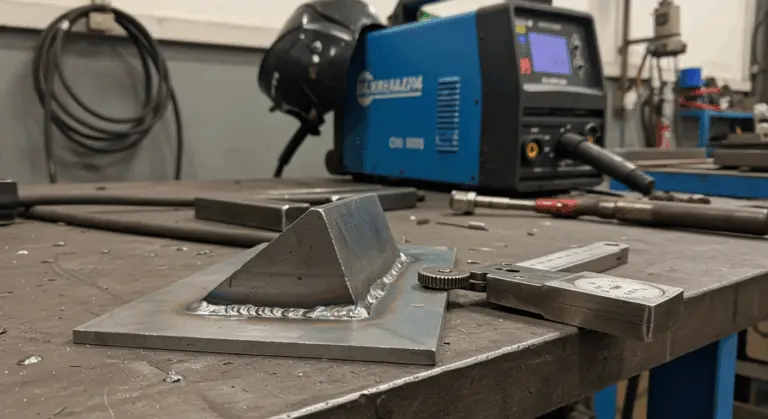What Is Spot Welding?
Spot welding is a resistance welding process that joins metal surfaces through concentrated heat and pressure. Two copper alloy electrodes pass high electric current through metal sheets, generating intense heat at the contact point. This rapid process—typically lasting just 10–100 milliseconds—melts the metal to form a strong bond called a weld nugget.
The automotive industry uses this technique for its efficiency in creating strong, aesthetically pleasing welds on thin metal sheets. Why is it so popular? It’s both cost-effective and clean, requiring no filler metals or fluxes.
How Does Spot Welding Work?
Spot welding operates in four key phases:
-
Alignment: The metal pieces are positioned between the two electrodes.
-
Pressure: The electrodes clamp down on the metal to ensure firm contact.
-
Current: A high electrical current passes through the assembly, generating intense heat that melts the metal at the interface.
-
Cooling: The current is switched off while pressure is maintained, allowing the molten metal to cool and solidify into a strong weld nugget.
A transformer manages the electrical power for spot welding, converting high-voltage/low-current input into the high-current/low-voltage output the process demands. Meanwhile, the electrodes must efficiently conduct this current while enduring extreme temperatures and pressures.
Parts of Spot Welding System
A spot welding system includes several essential components:
-
Power Supply and Energy Storage: Provides and delivers the high electrical current, often using a capacitor bank for rapid discharge.
-
Welding Transformer: Converts incoming power to the high-current, low-voltage output needed for welding.
-
Control System: A switch and control box that manage the timing and duration of the current flow to ensure weld consistency.
-
Welding Electrodes: Typically made from copper alloys, these components conduct current to the workpieces and apply clamping pressure.
-
Support Frame and Cooling System: An arm or frame for positioning the electrodes, often including a system to cool the electrodes during operation.
Welding Parameters of Spot Welding
Spot weld quality depends on precise control of several parameters—the interplay of pressure, time, and current.
The key parameters influencing spot welding outcomes are:
-
Electrode Force: The pressure applied to ensure good contact between the metal pieces.
-
Electric Current: The amperage setting, which determines the heat generated at the weld spot.
-
Tip Diameter: The size of the electrode tip, which affects the concentration and size of the weld.
-
Welding Time Cycle: The duration and sequence of the different phases of the process.
The welding time cycle consists of several precisely calibrated phases:
-
Squeeze Time: Pressure is applied before the current starts.
-
Up slope: The current is gradually increased.
-
Weld Time: The full welding current is maintained.
-
Down slope: The current is gradually decreased.
-
Hold Time: Pressure is maintained after the current stops to allow the weld nugget to solidify.
-
Off Time: The period between consecutive welds.
Other factors may also demand attention depending on the application: welding position and material thickness, for instance.
The Spot Welding Pressure
Pressure serves several important functions throughout the spot welding cycle. Initially, applied pressure ensures proper contact between metal sheets, eliminating gaps and reducing electrical resistance at surface interfaces. This allows current to flow efficiently through the intended path rather than arcing unpredictably.
The pressure from copper electrodes requires careful calibration. Too little pressure? Surface burning occurs. Too much? The electrical resistance needed for proper fusion diminishes.
In Resistance Spot Welding (RSW), commonly used in automobile and aerospace industries, the pressure is typically applied through pointed electrodes that focus both the force and current at precise points on thin workpieces. This focused application allows for effective joining of materials without affecting larger areas of the metal sheets.
However, pressure control has limitations—it offers relatively restricted regulation of heat input compared to other welding processes. This can sometimes lead to warping or cracking in certain applications.
Weld Time in Spot Welding
Weld time—the duration during which electrical current flows through workpieces—is one of the most important parameters affecting weld quality. This timing requires precise control to achieve optimal results, directly influencing how much metal melts to form the weld nugget.
Getting good weld quality requires balance. Too short? The resulting weld lacks strength. Too long? Heat can burn through the metal, damage electrodes, and waste energy.
Modern spot welding equipment measures weld time in cycles—one cycle equals 1/60th of a second in 60Hz power systems (or 1/50th in 50Hz systems). Weld times vary dramatically: just a few cycles for thin sheets, dozens for thicker materials.
Contemporary spot welding systems feature precise electronic controls that allow weld time adjustments down to single-cycle increments. This enables welders to fine-tune parameters for consistent, high-quality results across production runs—essential for maintaining weld integrity in safety-critical applications like automotive body construction.
What Metals Can You Spot Weld?
Spot welding is effective on a range of metals, with suitability depending on their properties:
-
Ideal: Low-carbon steel is the most suitable material due to its optimal electrical resistance and thermal properties. Sheets up to 3mm thick are easily welded.
-
Weldable: Galvanized steel, stainless steel, titanium, and nickel alloys are also commonly spot welded.
-
Challenging: Aluminum requires much higher current due to its high conductivity. High-carbon steels can form brittle welds, while copper and brass are difficult to heat sufficiently.
-
Not Recommended: Metals with extremely high conductivity, such as silver, pure copper, lead, and zinc, are generally unsuitable for spot welding without specialized equipment.
Spot Welding Aluminum
Spot welding aluminum is more challenging than welding steel due to aluminum’s distinct physical properties. It’s much higher thermal and electrical conductivity requires about three times more current to generate sufficient heat for proper fusion. Moreover, aluminum forms a stubborn oxide layer that complicates successful welding.
Despite these hurdles, spot welding is important for aluminum joining across many industries—particularly automotive manufacturing, where reducing weight is essential. Modern equipment designed specifically for aluminum delivers the higher currents needed while precisely controlling the weld cycle to prevent overheating or burn-through of this relatively soft metal.
Surface preparation is especially important when spot welding aluminum. The oxide layer naturally forming on aluminum surfaces acts as an electrical insulator and must be removed or broken down for effective welding. This typically involves mechanical cleaning methods or specialized electrode designs that can penetrate the oxide barrier.
For structural applications requiring numerous aluminum component joints, spot welding has clear advantages over alternatives like TIG welding—mainly speed and lower costs. The process can be automated for high-volume production, making it invaluable in manufacturing environments where consistency and throughput are priorities.
Applications of Spot Welding
Spot welding finds applications across numerous industries, valued for its efficiency and suitability with thin metals:
Advantages and Disadvantages of Spot Welding
Spot welding offers several key advantages:
However, the process also has some disadvantages:
Tips for Successful Spot Welding
-
Prepare Surfaces: Thoroughly clean joint surfaces to remove any oil, dirt, rust, or coatings that can interfere with the weld.
-
Maintain Electrodes: Regularly inspect, dress (reshape), and replace electrode tips to ensure a consistent current density and prevent poor welds.
-
Test and Calibrate Parameters: Use scrap material to fine-tune current, pressure, and weld time settings for your specific application.
-
Use Fixtures for Alignment: Employ clamps and positioners to ensure workpieces are held securely and consistently for each weld.
-
Implement Quality Control: Regularly test welds using destructive or non-destructive methods to verify integrity and document successful parameters.

